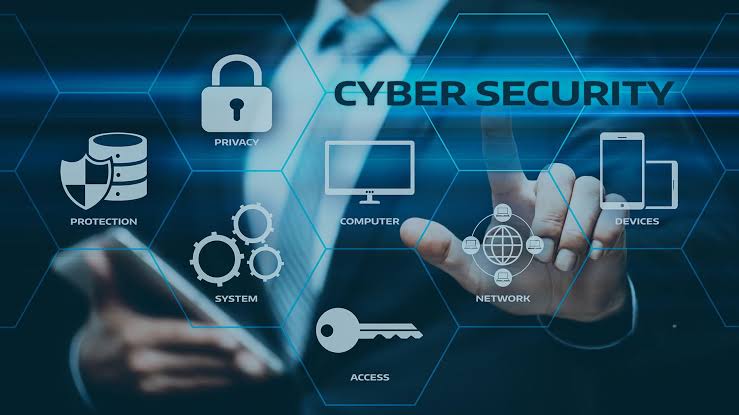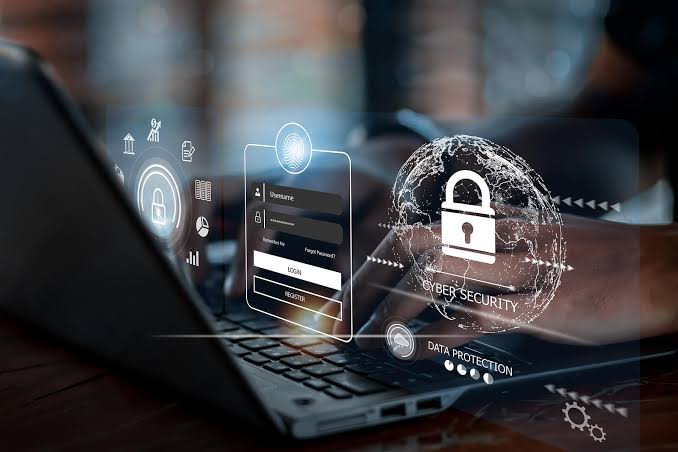Introduction


In today’s digital age, cybersecurity has become paramount for businesses, especially in the United States, where the threat landscape is constantly evolving. From small startups to large corporations, no entity is immune to the risks posed by cyberattacks. This article aims to delve into the various cybersecurity threats faced by American businesses and provide insights into protecting against these threats.
Understanding Cybersecurity Threats
Cybersecurity threats pose a significant risk to businesses of all sizes, ranging from data breaches to ransomware attacks. Understanding the landscape of these threats is crucial for developing effective defense mechanisms.


In recent years, the frequency and sophistication of cyber attacks have surged, with hackers employing diverse strategies to infiltrate systems and compromise sensitive information. Phishing attacks, malware infections, and social engineering tactics are among the most prevalent threats faced by American businesses today.
| Cybersecurity Threats | Protective Measures |
|---|---|
| Malware | – Deploy robust antivirus software<br>- Regularly update software and systems<br>- Educate employees on safe browsing habits |
| Phishing Attacks | – Conduct regular employee training on identifying phishing attempts<br>- Implement email filtering and validation systems<br>- Encourage reporting of suspicious emails |
| Data Breaches | – Encrypt sensitive data<br>- Limit access to confidential information<br>- Monitor network traffic for unusual activity |
| Distributed Denial of Service (DDoS) | – Utilize DDoS mitigation services or appliances<br>- Implement network traffic monitoring and filtering<br>- Have a response plan in place for handling DDoS attacks |
| Insider Threats | – Implement access controls and user permissions<br>- Conduct background checks on employees with access to sensitive information<br>- Monitor user activity and behavior for anomalies |


The Impact of Cyber Attacks on Businesses
Cyber attacks can have devastating consequences for businesses, extending beyond financial losses to damage reputation and erode customer trust. The aftermath of a successful cyber attack may involve legal liabilities, regulatory fines, and long-term operational disruptions.
Moreover, the interconnected nature of digital systems means that a breach in one area can have cascading effects across the entire organization and its stakeholders. Therefore, the impact of cyber attacks goes beyond immediate financial repercussions, posing existential threats to businesses.


Effective Strategies for Cybersecurity
- Risk Assessment and Management: Understand the risks faced by your organization by conducting regular assessments. Identify assets, threats, vulnerabilities, and potential impacts to prioritize your security efforts.
- Access Control and Identity Management: Implement strong authentication mechanisms, access controls, and least privilege principles to ensure that only authorized individuals can access resources.
- Regular Updates and Patch Management: Keep software, operating systems, and firmware up to date with the latest security patches to address known vulnerabilities.
- Network Security Measures: Deploy firewalls, intrusion detection/prevention systems, and secure network protocols to protect networks from unauthorized access, malware, and other threats.
- Data Protection: Encrypt sensitive data both in transit and at rest. Implement data loss prevention (DLP) solutions to monitor and prevent unauthorized data transfer.
- Employee Training and Awareness: Educate employees about cybersecurity risks, best practices, and how to recognize and respond to potential threats such as phishing attacks.
- Incident Response Plan: Develop a comprehensive incident response plan outlining procedures for detecting, responding to, and recovering from security incidents. Test the plan regularly through simulations and exercises.
- Vendor Risk Management: Assess the security posture of third-party vendors and service providers that have access to your systems or data. Ensure they meet your security requirements and standards.
- Continuous Monitoring and Analysis: Implement security monitoring tools and techniques to detect and respond to threats in real-time. Analyze security logs and data to identify patterns or anomalies indicative of potential breaches.
- Compliance with Regulations and Standards: Stay compliant with relevant regulations and industry standards such as GDPR, HIPAA, PCI DSS, etc. Compliance helps ensure a baseline level of security and can also serve as a framework for implementing security controls.
- Security Culture: Foster a culture of security within the organization, where security is everyone’s responsibility. Encourage reporting of security incidents and provide incentives for compliance with security policies.
- Regular Security Audits and Assessments: Conduct regular internal and external security audits to evaluate the effectiveness of security controls and identify areas for improvement.


Common Cybersecurity Threats
Malware, phishing scams, ransomware attacks, and Distributed Denial of Service (DDoS) attacks are a few of the most familiar cybersecurity threats encountered via American businesses. Malware, such as viruses, worms, and trojans, can infiltrate structures and scouse borrow sensitive statistics. Phishing scams trick users into revealing personal or financial data via misleading emails or web sites. Ransomware attacks encrypt valuable records, annoying a ransom for its release. DDoS attacks flood networks, rendering web sites and services inaccessible to legitimate customers.
Impact of Cybersecurity Threats on American Businesses


The repercussions of cybersecurity breaches can be devastating for groups. Financial losses on account of robbery or extortion can cripple operations. Moreover, the damage to reputation following a statistics breach can erode consumer consider and loyalty. Legal ramifications, which include regulatory fines and lawsuits, further compound the fallout. Additionally, disruptions to enterprise operations can result in lost productivity and revenue.
Key Components of Cybersecurity
To make stronger defenses against cyber threats, organizations need to undertake a multi-layered technique to cybersecurity. This includes safeguarding networks, endpoints, cloud infrastructure, and statistics thru encryption. Network security features, consisting of firewalls and intrusion detection systems, assist screen and manipulate incoming and outgoing traffic. Endpoint safety solutions defend person devices, which includes computer systems and mobile gadgets, from malware and unauthorized get entry to. Cloud safety ensures the safety of statistics stored in cloud environments, whilst encryption safeguards touchy information from unauthorized get right of entry to.
Best Practices for Cybersecurity
Implementing satisfactory practices is vital for mitigating the danger of cyberattacks. Regular software program updates patch recognised vulnerabilities, lowering the chance of exploitation with the aid of cybercriminals. Employee education and recognition packages educate staff about cybersecurity threats and equip them with the knowledge to apprehend and respond correctly to suspicious activities. Enforcing sturdy password guidelines and imposing multi-issue authentication provides an extra layer of security to sensitive debts and systems.


Cybersecurity Solutions for Businesses
Businesses can invest in numerous cybersecurity solutions to bolster their defenses in opposition to cyber threats. Firewalls and antivirus software offer frontline protection against malware and unauthorized access tries. Intrusion detection structures monitor community visitors for suspicious conduct and alert directors to capacity threats. Security statistics and occasion management (SIEM) structures mixture and examine protection statistics from multiple resources, permitting proactive chance detection and response. Additionally, growing and rehearsing incident reaction plans ensures swift and effective movement inside the occasion of a cyber incident.
Collaborative Efforts in Cybersecurity
Addressing cybersecurity threats calls for collaboration among authorities organizations, personal sector groups, and cybersecurity experts. Government projects, consisting of the Cybersecurity and Infrastructure Security Agency (CISA), offer steering and assets to beautify cybersecurity resilience across critical infrastructure sectors. Public-non-public partnerships facilitate information sharing and collaboration on cybersecurity first-class practices and hazard intelligence. Moreover, fostering a culture of cybersecurity consciousness and duty among all stakeholders is important for collective defense against cyber threats.
Future Trends in Cybersecurity


As cyber threats preserve to adapt, businesses ought to live in advance of the curve with the aid of embracing emerging technology and security paradigms. Artificial intelligence and gadget learning are increasingly more being deployed to reinforce cybersecurity defenses, enabling automatic danger detection and reaction capabilities. Zero accept as true with security fashions undertaking traditional perimeter-primarily based methods through adopting a “in no way trust, continually verify” mind-set, requiring non-stop authentication and authorization for get admission to to sources. Quantum-resistant cryptography addresses the looming danger posed via quantum computer systems to standard encryption algorithms, making sure the long-time period security of sensitive facts.
Conclusion
In end, safeguarding American organizations in opposition to cybersecurity threats is an ongoing undertaking that requires a concerted attempt from all stakeholders. By knowledge the character of cyber threats, imposing strong cybersecurity measures, and fostering collaborative partnerships, groups can mitigate risks and guard their assets, clients, and popularity. Proactive funding in cybersecurity isn’t always only a prudent business selection but additionally essential for ensuring the resilience and viability of the American financial system in an more and more virtual global.
FAQs
What are the most not unusual cybersecurity threats confronted by means of American groups?
Malware attacks, phishing scams, ransomware attacks, and DDoS assaults are among the maximum not unusual cybersecurity threats encountered with the aid of American companies.
How can businesses mitigate the risk of cybersecurity threats?
Businesses can mitigate the danger of cybersecurity threats by means of implementing first-class practices including everyday software updates, worker education, sturdy password regulations, and multi-component authentication.
What role does worker training play in cybersecurity?
Employee education performs a crucial position in cybersecurity by elevating recognition about cyber threats and equipping personnel with the know-how to recognize and reply to capability protection risks efficiently.
Are there any authorities regulations regarding cybersecurity for organizations?
Yes, there are numerous authorities policies and enterprise requirements that mandate cybersecurity measures for businesses, depending on their quarter and geographic location.
How can small agencies have enough money cybersecurity measures?
Small corporations can explore price-effective cybersecurity answers, leverage free resources provided by using government companies and cybersecurity groups, and prioritize investments based on hazard assessment and mitigation strategies.


TotalInfo4U: Your Ultimate Source for Comprehensive Knowledge

